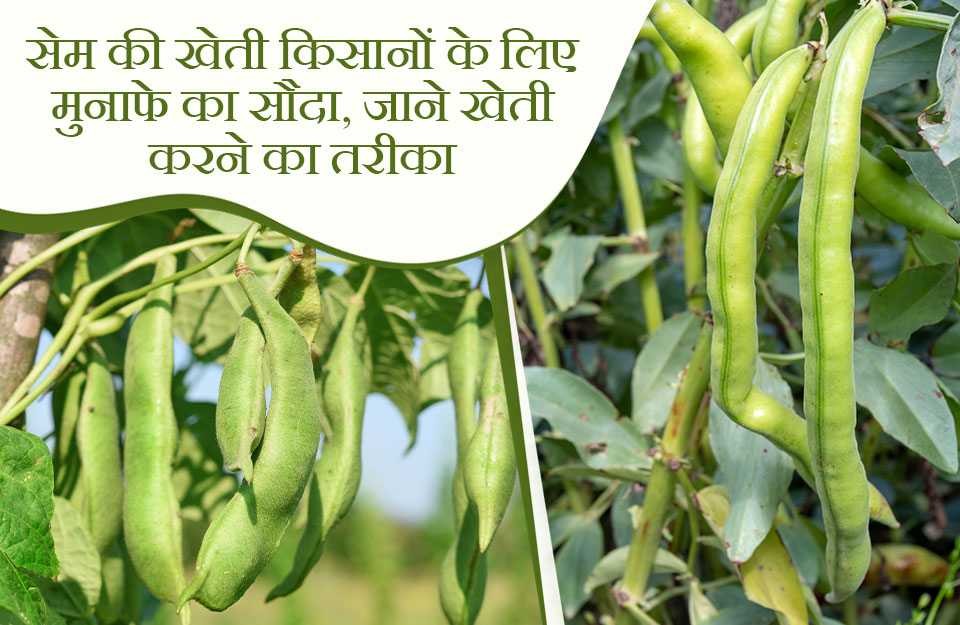
India holds the second position in vegetable production globally. Bean cultivation is extensively practiced across the country with variations observed in the color and size of its pods. The vines and leaves of beans are harvested and utilized as fodder for animals. From a nutritional standpoint, beans are a significant crop, abundant in protein and various minerals including vitamins, carbohydrates, calcium, phosphorus, iron, magnesium, sulfur, and more. Moreover, beans play a crucial role in stabilizing atmospheric nitrogen in the soil, thereby enhancing its health and fertility.
Bean cultivation serves dual purposes as both a leguminous crop and a vegetable. The pods produced by bean plants are commonly consumed in their raw form. Bean cultivation is widespread across all regions of India. In Ayurveda, beans are recognized for their medicinal properties as they are considered sweet, cooling, heavy, tonic, and capable of alleviating the effects of wind, bile, phlegm, etc. Beans are rich in essential nutrients, and their leaves have been found effective in treating skin diseases like leprosy. Presently, large-scale bean cultivation is undertaken in states like Uttar Pradesh, Madhya Pradesh, Maharashtra, and Tamil Nadu.
Prior to sowing, it is recommended to prepare the field by plowing, especially in cases of inadequate moisture. The field should be plowed thoroughly twice using a tractor or plow, followed by the application of fertilizers. Optimal moisture levels are crucial for seed germination during sowing. Bean cultivation is ideally conducted in flat fields using row planting or ridge planting methods to facilitate optimal plant growth. For vining varieties, the recommended distances between rows and plants are 90 cm and 75 cm, respectively.
Bean cultivation is adaptable to various soil types, with sandy-loam soil featuring good drainage being preferred. A pH value ranging between 6-7 is considered optimal for bean cultivation. Beans thrive in warm climates, with temperatures ranging between 18-30 degrees Celsius being conducive to achieving high yields. Additionally, beans can be cultivated in rain-fed conditions, with rainfall ranging from 650-700 mm being suitable, even in areas without irrigation facilities.
For a successful bean harvest, it's recommended to mix 10-12 tons of well-decomposed cow dung into the soil during field preparation. Around 20-25 kg of nitrogen, 40-45 kg of phosphorus, and 40-50 kg of potassium per hectare are necessary. Half of the nitrogen dosage and the full dosage of phosphorus and potassium should be applied during sowing, with the remaining nitrogen applied as a top dressing 30-35 days later.
Sowing Period: Bean planting ideally takes place in July-August, which is highly conducive to its growth.
Seedbed Preparation and Weed Control: Immediately after sowing, mulching should be carried out. Mulching aids in improved seed germination by increasing soil temperature, conserving soil moisture, and suppressing weed growth. Regular hoeing is necessary to keep the field weed-free. For effective weed management, herbicides like pendimethalin should be sprayed at a rate of 3.5 liters per 1000 liters of water within 48 hours of sowing, ensuring weed control for 40-50 days.
Irrigation for Bean Cultivation: Bean crops generally do not require irrigation during the monsoon season. However, it's essential to maintain adequate moisture during flowering to prevent plant wilting and ensure optimal yields. Therefore, regular irrigation is recommended during this period.
Read More... Maize Cultivation and Varieties of Maize Crop in India, Maize Cultivation in india
Importance of Beans: Beans are climbing vegetables with pods and seeds commonly consumed in combination with various other vegetables like potatoes. Pods come in a variety of colors such as long, flat, yellow, green, and white. Beans seeds are rich in protein. In Uttar Pradesh, they are sown as a rabi crop. Bean leaves are known to alleviate constipation and purify the blood, and the juice extracted from bean leaves is beneficial for health.
Advanced Bean Varieties:
Major Diseases and Control Measures: